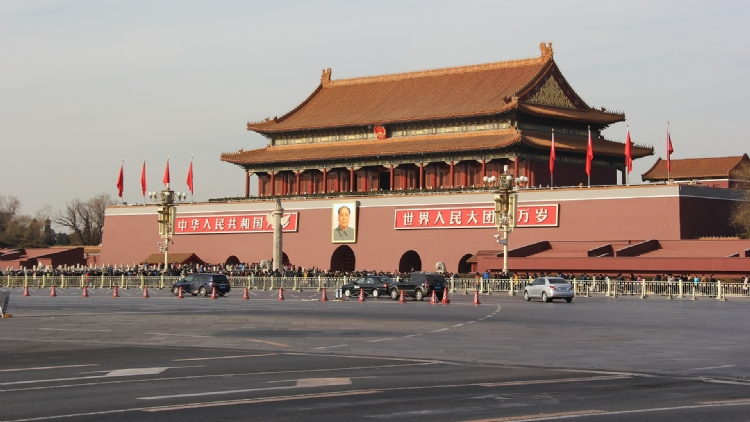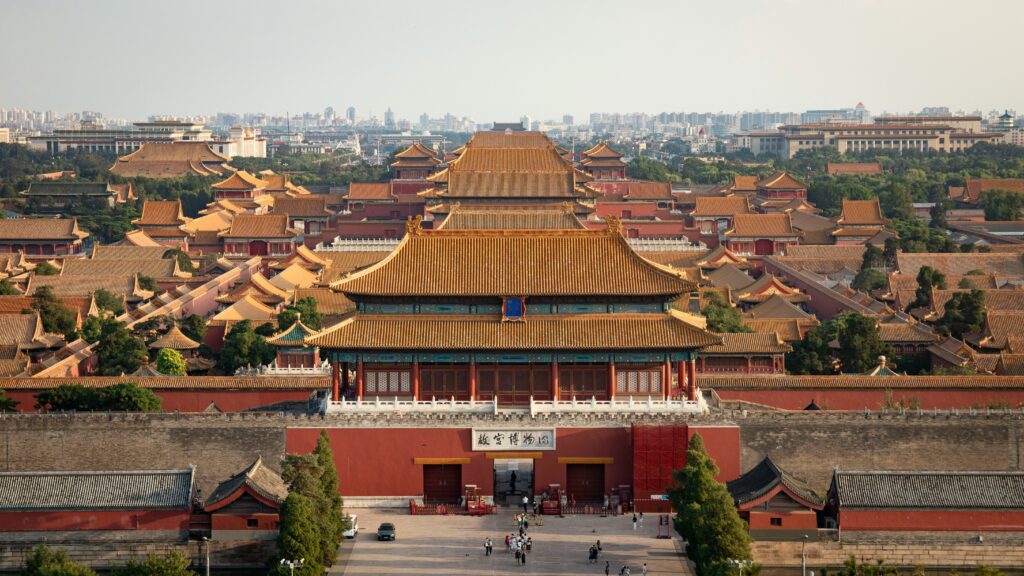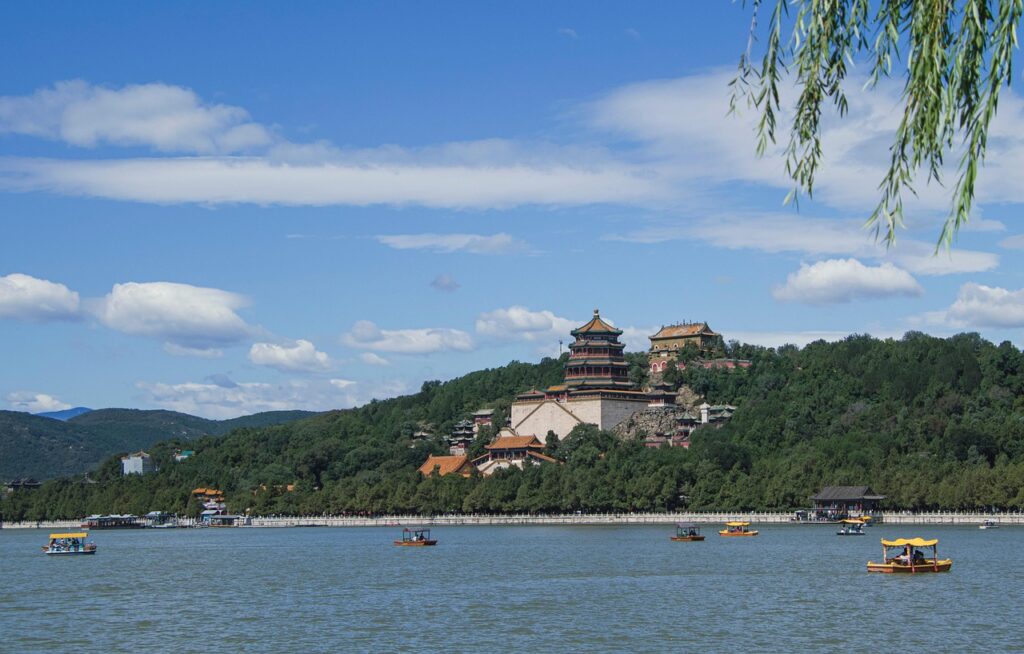China’s capital city, where history and modernity mingle, and the Forbidden City and the Great Wall bear witness to a thousand years of civilization.

Tian’anmen Square
Located at the center of Beijing City and the midpoint of Chang’an Avenue is the remarkable Tiananmen Square, where you can visit the Tiananmen Tower, Monument to the People’s Heroes, Great Hall of the People, Chairman Mao Zedong Memorial Hall and see the national flag raising ceremony. Thousands of people come to the Square every day. The granite Monument to the People’s Heroes is just at the center of Tiananmen Square. Built in 1952, it is the largest monument in China’s history. ‘ The People’s Heroes are Immortal’ written by Chairman Mao is engraved on the monument. Eight unusually large relief sculptures show to the people the development of Chinese modern history. Two rows of white marble railings enclose the monument, simple and beautiful.
The Forbidden City
Forbidden City lies at the city center of Beijing, and once served as the imperial palace for 24 emperors during the Ming and Qing Dynasties. Now known as the Palace Museum, it is to the north of Tiananmen Square. Rectangular in shape, it is the world’s largest palace complex and covers 74 hectares. Surrounded by a 52-meter-wide moat and a 10-meter-high wall are more than 8,700 rooms. Having been the imperial palace for some five centuries, Forbidden City houses numerous rare treasures and curiosities. Listed by UNESCO as a World Cultural Heritage Site in 1987, the Palace Museum is now one of the most popular tourist attractions world-wide.


Summer Palace
Situated in the northwest of Beijing, Summer Palace is 15 kilometers from central Beijing. Being the largest and most well-preserved royal park in China, it greatly influences Chinese horticulture and landscape with its famous natural views and cultural interests, which also has long been recognized as “The Museum of Royal Gardens”. The construction started in 1750 as a luxurious royal garden for royal families to rest and entertain. It later became the main residence of royal members in the end of the Qing Dynasty.
Temple of Heaven
The Temple of Heaven is the most holy of Beijing’s Imperial temples. For this is where the Emperor came every winter solstice to worship heaven and to solemnly pray for a good harvest. Temple of Heaven is tranquil oasis of peace and methodical Confucian design in one of China’s busiest urban landscapes, the 267-hectare Temple of Heaven Park is encompassed by a long wall with a gate at each compass point. The architecture and layout of the temple of Heaven is based on elaborate symbolism and numerology. In accordance with principles dating back to pre-Confucian times, the buildings in the Temple of Heaven are round, like the sky, while the foundations and axes of the complex are rectilinear, like the earth.


The Great Wall
One of the most famous and impressive monuments in the world. Walking along the Great Wall, especially in the Badaling or Mutianyu sections, will provide unique views of the surrounding landscapes and allow you to experience the grandeur of this ancient defensive structure. The Great Wall is an ancient defense project with the longest construction time and the largest amount of works in China and the world. It is a defense system with the wall as the main body and a large number of cities, barriers, pavilions and markers. Listed by UNESCO as a World Cultural Heritage Site in 1987.

